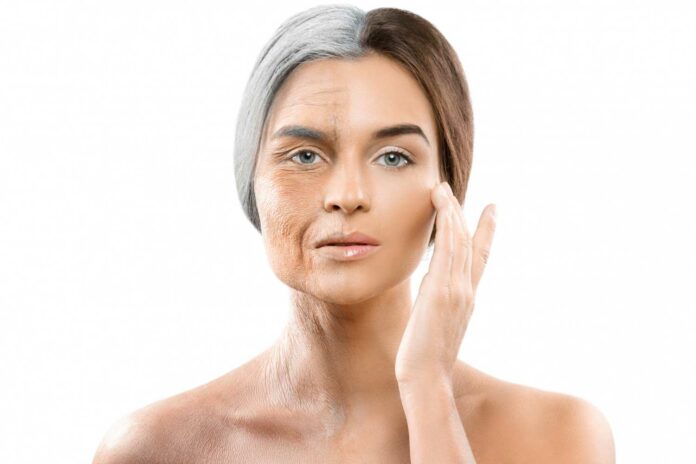As skin ages or faces more sun, it becomes drier and wrinkled. New study suggests skin microbes play a role in aging signs. Researchers at University of California San Diego and L’Oréal made this discovery, isolating microbes linked to skin aging, not just age. Published in Frontiers in Aging, it’s a unique finding in skin health research.
Using CMI’s data skills and L’Oréal’s skin expertise, a study analyzed 13 past L’Oréal studies. They combined 16S rRNA amplicon sequence data and skin info from 650 18-70-year-old women. Each study focused on specific aspects like wrinkles or moisture loss. This analysis found trends related to microbes, considering factors like age.
Corresponding author Se Jin Song, the CMI Director of Research, said, “Previous studies have shown that the types of microbes on our skin change fairly predictably with age. Our skin also changes physiologically with age; for example, we gain wrinkles, and our skin gets drier. But there is variation in what this looks like in people—you’ve probably noticed that some people have younger or older-looking skin than others their age.”
“Using advanced statistical methods, we were able to tease apart the microbes associated with these types of aging signs for the skin, like crow’s feet wrinkles, from those associated with simply age as a chronological number.”
The analysis revealed two key findings. First, more diverse skin microbes were linked to fewer wrinkles in crow’s feet. Second, less diversity correlated with higher moisture loss through the skin. Exploring further, potential biomarkers were identified, guiding researchers toward understanding microbial links to skin aging. While causation is not confirmed, these insights offer directions for future studies.
“L’Oréal aims to create personalized beauty products. Our collaboration with the Center for Microbiome Innovation uncovered the skin microbiome’s role in aging, especially in wrinkles and skin quality,” said Qian Zheng, Head of Advanced Research, North America at L’Oréal. “This groundbreaking research identifies microbial biomarkers linked to visible aging signs like crow’s feet wrinkles, paving the way for healthier, youthful skin technologies. Future investigations may explore chemical biomarkers and genetic targets for skincare advancements beyond the outer skin layer.”
Co-author Rob Knight, the CMI Faculty Director and Professor of Pediatrics, Bioengineering, Computer Science and engineering, and Data Science at UC San Diego, said, “While the study’s findings represent an advance of our knowledge of the skin microbiome, we view them as just the beginning of a new phase of research.
“By confirming a link between the microbiome and skin health, we’ve laid the groundwork for further studies that discover specific microbiome biomarkers related to skin aging and, one day, show how to modify them to generate novel and highly targeted recommendations for skin health.”
In conclusion, the L’Oréal and the Center for Microbiome Innovation study uncover potential links between the skin microbiome and aging signs like wrinkles. The positive association between microbiome diversity and reduced crow’s feet wrinkles and the negative link to moisture loss marks a crucial step.
This groundbreaking research identifies microbial biomarkers, offering insights for healthier skin technologies. Future investigations may explore chemical biomarkers and genetic targets, contributing to advancing skincare solutions beyond the outer skin layer.
Journal reference:
- Tyler Myers, Amina Bouslimani, et al., A multi-study analysis enables identification of potential microbial features associated with skin aging signs. Frontiers in Aging. DOI: 10.3389/fragi.2023.1304705.
